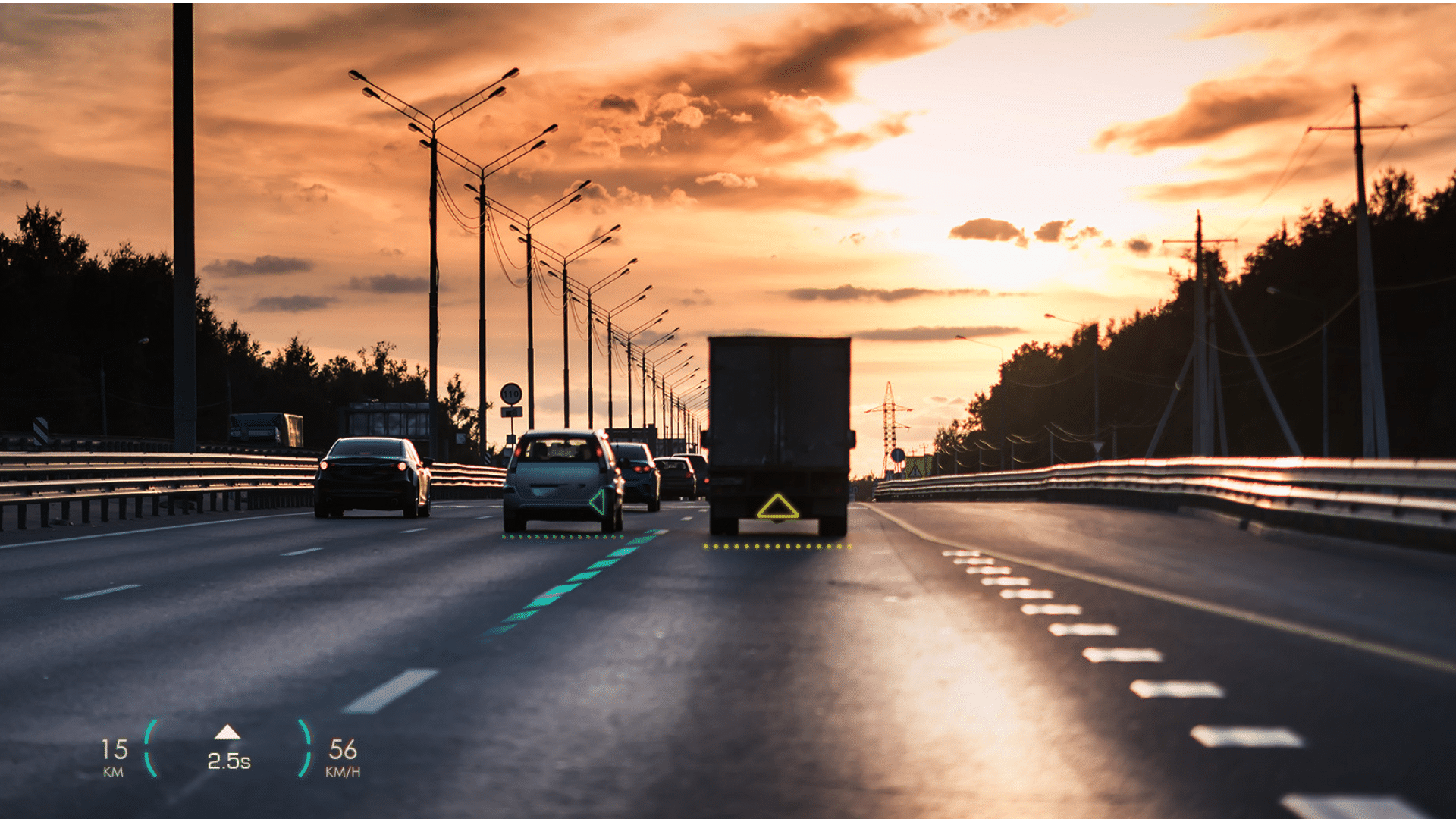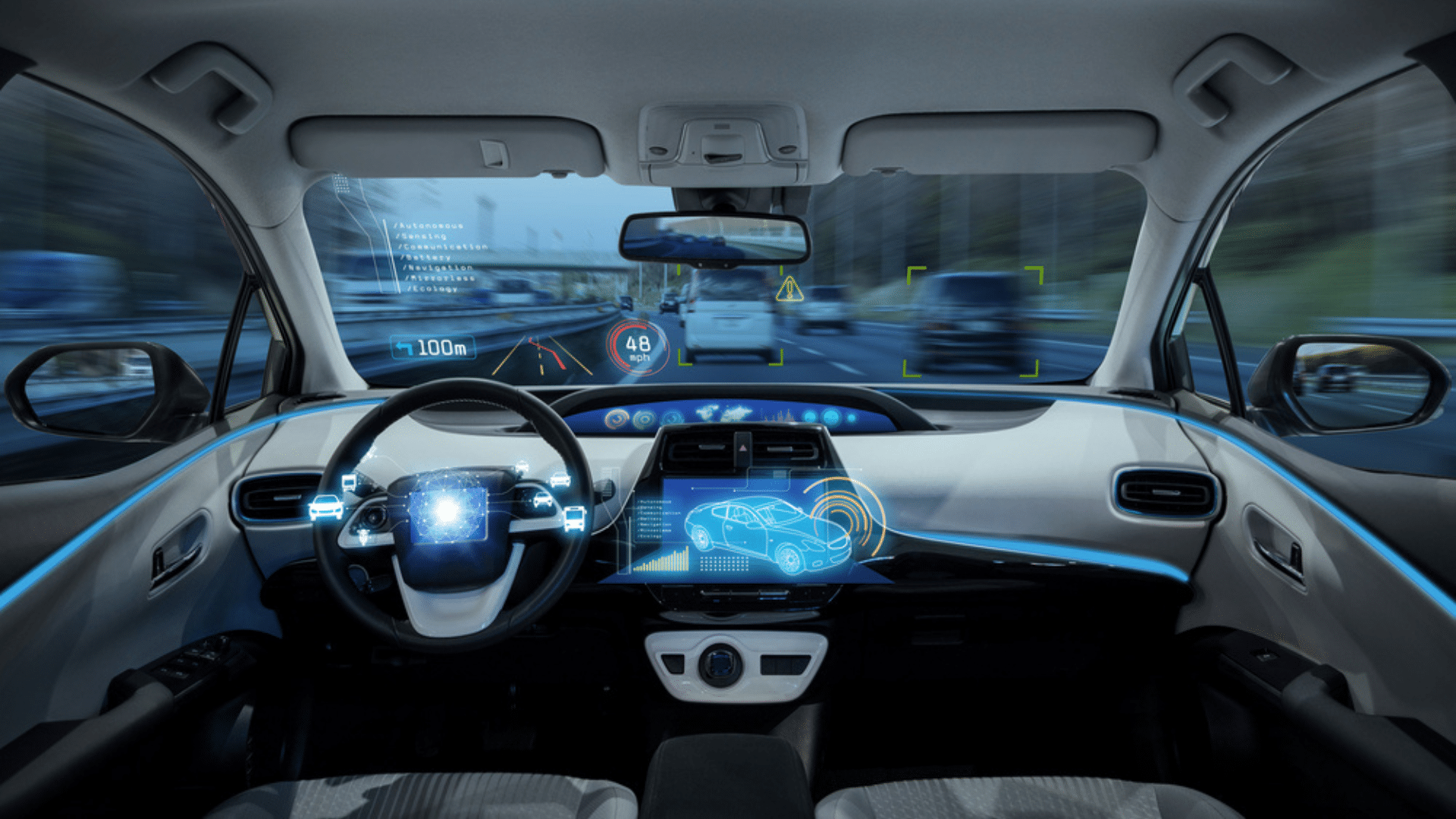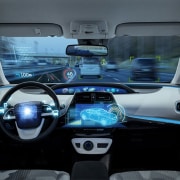Head Up Display Technology: Enhancing Driver Safety and Experience

What is a Head Up Display (HUD)?
Overview
What is a head up display (HUD)? This automotive electronic system displays vehicle and environmental data on the windshield in the driver’s line of sight. While integrating speed, navigation, and ADAS alerts with the exterior view, this head up display technology keeps drivers focused on the road. HUDs will grow to reach USD 3,372 million by 2025. It shows their rising relevance for better driver experience and safety in the automobile sector.
Technology is elevating the car sector. Driver assist and surround-view cameras, long restricted to high-end vehicles, are now standard in several mid-end cars. HUDs are doing the same thing slowly.
Additionally, Mazda also provides HUDs in numerous vehicles. Instead of embedding pricey components in the dash with a dedicated windshield, Mazda3 and Mazda6 HUDs employ a foldable plastic lens. MINI offers a comparable system. However, this low-cost technique restricts image size and location compared to windshield HUDs.
The Need for HUD
The head up display technology reduces eye movement and focus adjustment. The immediate data flow decreases cognitive strain for speedy response to driving conditions and risks. E.g., dual-focal HUDs optimize data processing and comprehension by separating critical driving metrics and navigational signals across visual planes. They may offer active driving support information 25 meters from the driver and road information 2.5 meters away on two displays.
Consequently, head up display technology increases situational awareness, lowers distractions, and expedites data intake. It has become a vital resource for vehicle safety.
Types of HUDs
- Combined Head-Up Display (CHUD): CHUD technology is the core of head up display technology. It displays basic driving information directly into the driver’s line of sight. A simple projection mechanism displays data on a clear screen or windshield. CHUD’s fundamental capability limits its interaction with real-time driving circumstances and ADAS. CHUD displays might employ TFT-LED panels and 2D flat displays. Yet, they need at least 20 liters of HUD volume, have low brightness and contrast, and lack distance perception.
- Windshield Head-Up Display (WHUD): WHUD improves head up display technology. This connection increases the display area for more complicated information. WHUD’s easy integration into the windshield creates a more vivid information display without changing focus length. WHUD systems are complex and need special windshields. Because WHUD systems are fixed, they must be custom-designed for each vehicle model. WHUD displays can also utilize TFT-LED or DLP projection. Still, they might have a smaller virtual image, failing brightness and contrast, and no AR.
- Augmented Reality Head-Up Display (AR-HUD): AR-HUD is the latest head up display technology. It overlays digital information on the real-world view. AR-HUD displays people and objects on the windshield and give adaptive navigation signals that blend with the road ahead. Plus, it uses laser beam scanning, variable field of vision, virtual image distance, volume, and low power. Remember, AR-HUD systems need development costs and computing resources to process real-time data and build the augmented display. It may restrict short-term adoption. AR-HUD’s rich visualizations may overwhelm certain drivers. It requires custom display choices to avoid information overload.
Understanding How HUDs Operate

Projection Basics
Learning “how HUD works” or “how does a heads up display work” entails knowing how it projects navigation and vehicle statistics into a driver’s field of sight. A heads-up display uses a projector to show images onto the windshield or combiner. Optical systems with lenses and mirrors sharpen and guide the presented information without distraction.
For instance, the windshield HUD matches the glass’s curve to display data as if it’s floating on the road ahead. It cuts the need for drivers to look away from their environment. On the other hand, combiner HUDs use transparent LCD panels to reflect the display from a smaller area and are more compact. These systems use calibration to adapt the display to correct viewing angles and distances for clarity and readability in many lighting situations.
Optical Combiner Functionality
As a selective filter and reflecting surface, the optical combiner helps in HUD visibility. When addressing “how does a heads up display work,” the optical combiner also harmonizes the projected visualization with the driver’s closest line of perception for the finest luminance. Optical combiner HUD systems use refined polymers and coatings to improve light refraction and reflection. It guarantees that the information is clearly shown against the windshield view.
The combiner also adjusts the focal distance of the projected data so that drivers can see it as if it were moving ahead on the road. Accordingly, this arrangement increases readability in broad lighting situations and keeps the driver focused on the road for safer driving.
The Picture Generation Unit
The picture-generating unit of a HUD uses optical technology to present information, which is integral to how HUD works. A high-resolution projector with LED or laser light sources illuminates digital material. This approach ensures that information is displayed clearly and directly, avoiding duplicate images under various lighting conditions.
Furthermore, the image-generating unit of AR-HUDs overlays dynamic visuals immediately over the road view using real-time data from the vehicle’s sensors and navigation systems for better situational consciousness without troubling the driver. This hardware-software interaction delivers legible, actionable information straight into the driver’s field of sight. It helps optimize the user experience while combining real-world and digital stimuli.
Spotlight on FIC AR-HUD Features
Innovative Laser Beam Scanning (LBS)
A cornerstone of refined head up display technology, LBS technology projects information using high-intensity laser light sources. It gives unmatched visibility even in strong sunshine.
Meanwhile, lasers’ higher contrast (80,000:1) and brightness increase display content readability with crisper pictures and more colors. LBS can regulate light more accurately than standard HUD systems. It enables flexible brightness modification in response to ambient light conditions, which solves the challenge of “how does a heads up display work” under varying lighting scenarios. Hence, LBS keeps key driving information bright and readable.
Integration with ADAS
AR-HUD and ADAS from FIC use inventive optical projection and sensor technologies. The AR-HUD features Laser Beam Scanning for projection, high contrast & brightness, 6-42 degrees FOV, 3-50M VID, 4L-20L volume, low power consumption, and ADAS-based with seven algorithms for road status mapping. It answers how HUD works while fusing real-world and virtual data without pulling drivers’ attention away from the road.
While ADAS employs radar, lidar, and cameras to monitor and evaluate environmental variables, the ECU makes judgments to improve response times and circumvent accidents. These technologies provide an inclusive safety net, including but not limited to blind spot recognition, lane departure alerts, and adaptive cruise control. So, learn more about FIC AR-HUD and ADAS by visiting FIC’s official AR-HUD page and FIC’s ADAS solutions.





